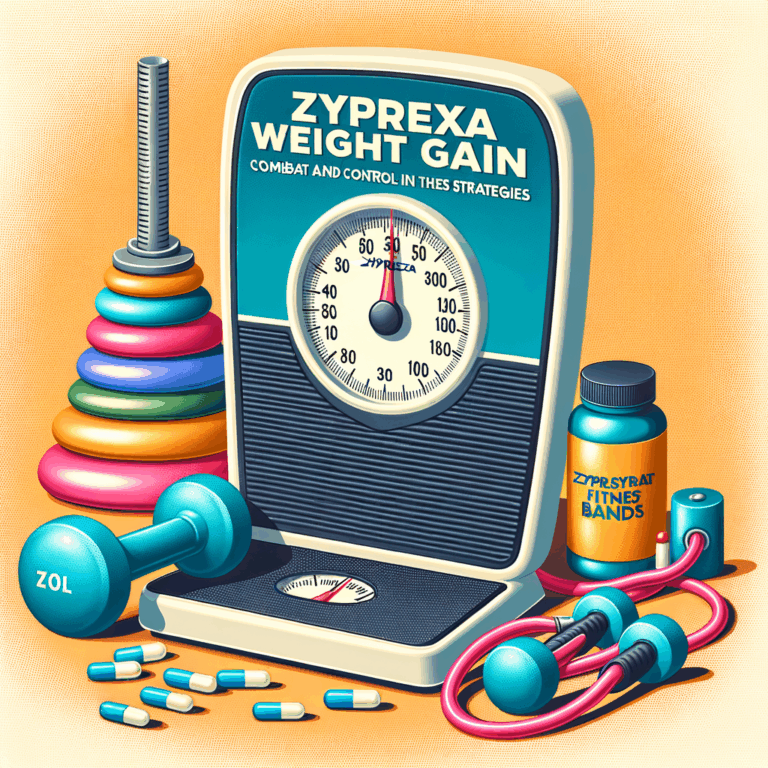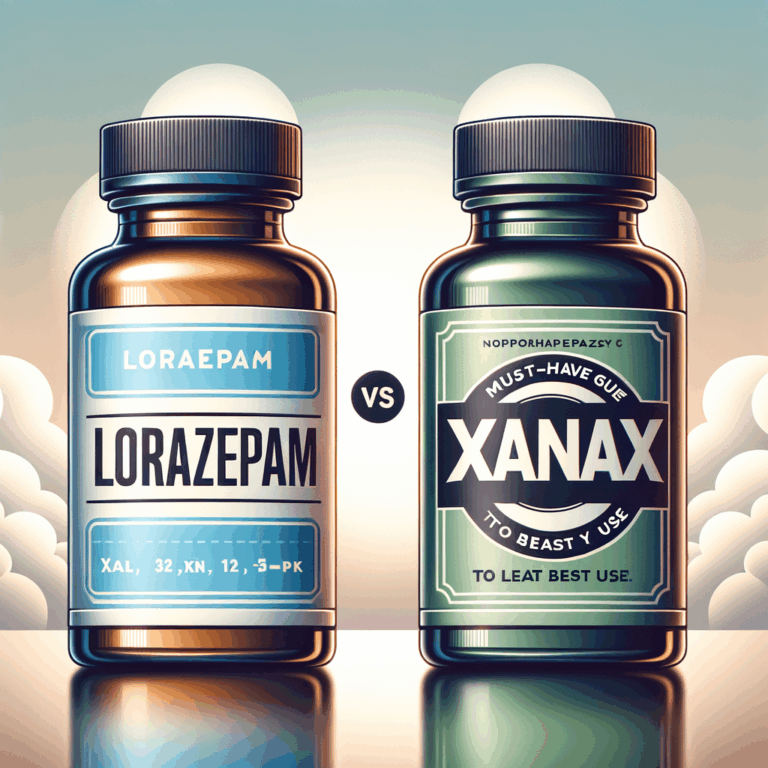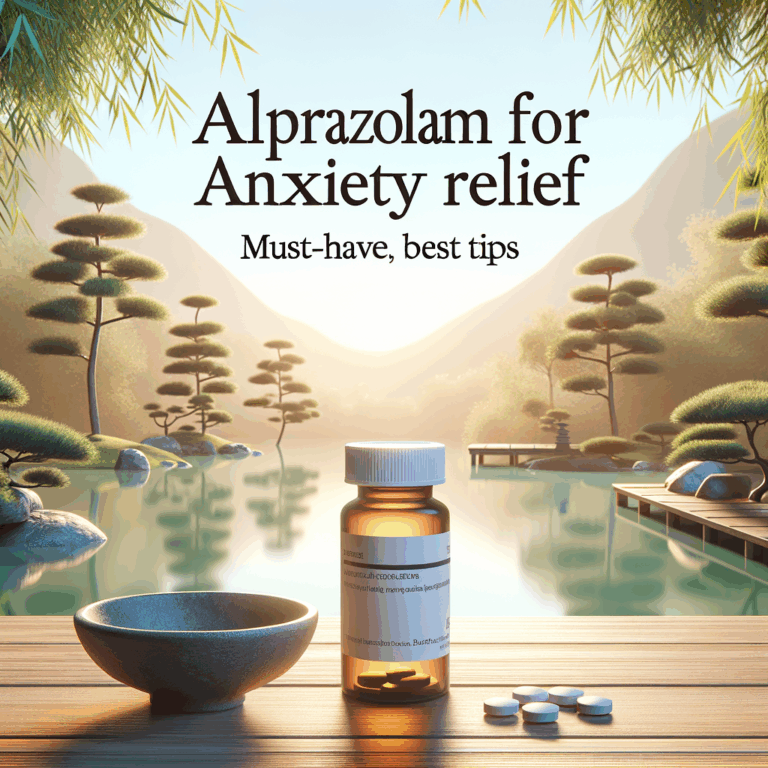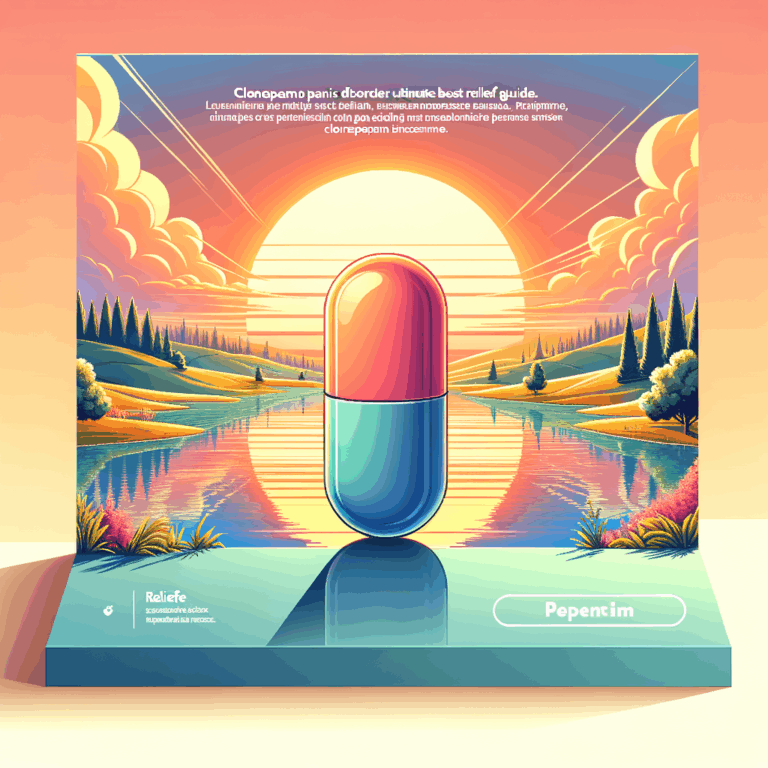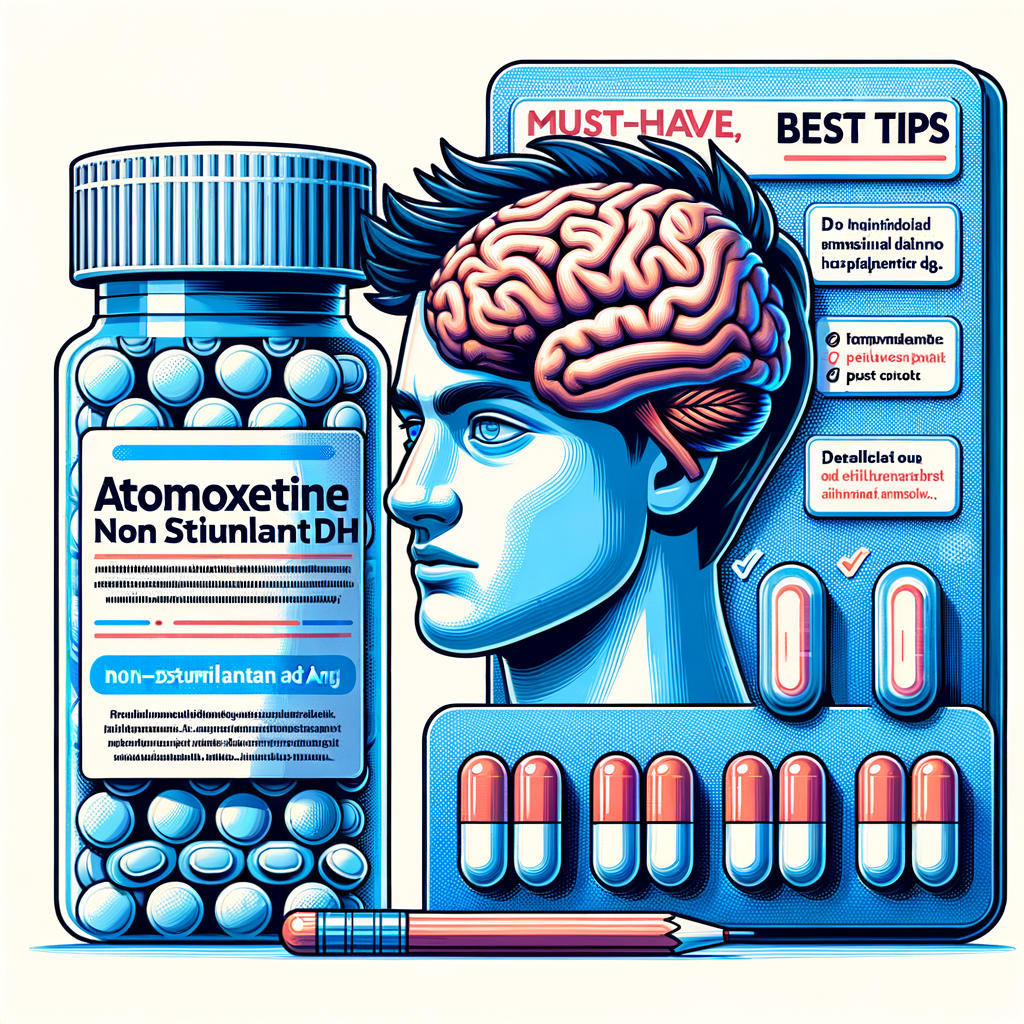
- Understanding Atomoxetine Non Stimulant ADHD
- How Atomoxetine Works
- Who Should Consider Atomoxetine?
- Benefits of Choosing an Atomoxetine Non Stimulant ADHD Option
- Comparing Atomoxetine to Stimulants
- Starting Atomoxetine: What to Expect
- Dosage and Timing
- Monitoring and Follow-Up
- Managing Side Effects
- Practical Tips to Reduce Side Effects
- Atomoxetine and Coexisting Conditions
- Use in Patients with Heart Issues
- Behavioral Strategies to Combine with Atomoxetine
- School and Work Accommodations
- Long-Term Use and Safety
- Stopping Atomoxetine Safely
- Special Populations: Children, Teens, and Adults
- Pregnancy and Breastfeeding
- Practical Tips for Daily Success on Atomoxetine
- Diet, Sleep, and Exercise
- What to Discuss with Your Doctor
- Questions Your Clinician Might Ask
- Common Misconceptions About Atomoxetine Non Stimulant ADHD
- Real-World Tips from Patients and Caregivers
- Success Strategies That Help Most
- Cost and Access Considerations
- Online Pharmacies and Safety
- When Atomoxetine Isn’t the Right Choice
- Final Thoughts: Making a Smart Choice
- Frequently Asked Questions (FAQs)
- References
Understanding Atomoxetine Non Stimulant ADHD
Atomoxetine non stimulant ADHD refers to a specific drug option for attention-deficit/hyperactivity disorder. Unlike stimulant drugs, atomoxetine acts on norepinephrine pathways. As a result, it offers an alternative for people who cannot tolerate stimulants.
Doctors approved atomoxetine for children, teens, and adults. Therefore, many caregivers and patients consider it when stimulants cause side effects or are ineffective. In short, atomoxetine changes brain chemistry in a different way than methylphenidate or amphetamines.
How Atomoxetine Works
Atomoxetine blocks the norepinephrine transporter. Consequently, norepinephrine stays longer in brain synapses. This increased presence improves attention, impulse control, and focus.
Moreover, atomoxetine shows less abuse potential. It does not trigger the reward circuits in the same way stimulants do. Therefore, clinicians often choose it for patients with substance use concerns.
Who Should Consider Atomoxetine?
Doctors often recommend atomoxetine for people who have a history of stimulant intolerance. For instance, individuals who experience severe jitteriness, insomnia, or appetite loss may benefit. Also, those with co-occurring anxiety or substance use disorder may find atomoxetine appropriate.
However, doctors assess each patient carefully. They consider medical history, other medications, and cardiovascular status. Therefore, atomoxetine suits some but not all people with ADHD.
Benefits of Choosing an Atomoxetine Non Stimulant ADHD Option
First, atomoxetine provides steady symptom control. It works continuously and does not require multiple daily doses in most cases. Consequently, users experience fewer peaks and troughs in symptom relief.
Second, atomoxetine reduces the risk of misuse. People rarely develop dependence on it. On top of that, many schools and workplaces accept non-stimulant prescriptions due to lower abuse potential.
Lastly, atomoxetine helps with coexisting conditions. For example, it may reduce anxiety symptoms in some patients. Thus, it offers dual benefits for mixed presentations.
Comparing Atomoxetine to Stimulants
Stimulants act fast and often yield quick improvement. Conversely, atomoxetine takes several weeks to show full effects. Therefore, patients and families should prepare for a slow onset.
Stimulants can suppress appetite and raise heart rate. By comparison, atomoxetine has different side effects, like nausea or dry mouth. Moreover, atomoxetine may cause changes in blood pressure, so doctors monitor patients regularly.
Starting Atomoxetine: What to Expect
Your clinician will perform a baseline evaluation before starting atomoxetine. They will review your medical history and current medications. Also, they may check heart rate and blood pressure.
Doctors usually begin at a low dose. They increase it gradually based on response and side effects. Over weeks, you will notice slow improvement. Therefore, patience matters during the initial phase.
Dosage and Timing
Clinicians dose atomoxetine by weight in children and by fixed doses in adults. They often prescribe it once daily. In some cases, taking it in the morning avoids sleep disruption.
If side effects occur, your doctor might split the dose. Alternatively, they may reduce the daily amount. Importantly, never change your dose without medical guidance.
Monitoring and Follow-Up
Providers schedule follow-ups every few weeks at first. They measure blood pressure, heart rate, and ADHD symptoms. Furthermore, they ask about mood changes and suicidal thoughts.
If problems arise, your clinician adjusts treatment. They may switch medications or add behavioral therapy. Therefore, ongoing monitoring helps keep treatment safe and effective.
Managing Side Effects
Atomoxetine can cause side effects, but most people tolerate it. Common side effects include nausea, fatigue, and decreased appetite. These issues often improve with time.
If you notice severe symptoms, contact your doctor immediately. Severe effects include chest pain, fainting, or new mood changes. Also, report thoughts of self-harm right away.
Practical Tips to Reduce Side Effects
Try taking atomoxetine with food to ease nausea. Also, stay hydrated and eat small, frequent meals to counter appetite loss. Moreover, schedule doses earlier in the day if insomnia appears.
Additionally, track your symptoms in a journal. This practice helps your clinician adjust the plan. Consequently, you receive tailored care based on clear data.
Atomoxetine and Coexisting Conditions
People with anxiety, tic disorders, or mood instability often ask about atomoxetine. Many studies show it might help anxiety symptoms. Also, it rarely worsens tics.
However, atomoxetine can affect liver enzymes in some people. Therefore, doctors may order liver function tests when they suspect issues. Patients with liver disease need dose adjustments or alternate therapies.
Use in Patients with Heart Issues
Before starting atomoxetine, clinicians screen for heart disease. They assess blood pressure and heart rate regularly. If you have a history of heart problems, the clinician will weigh risks and benefits carefully.
In rare cases, atomoxetine can raise blood pressure. Thus, people with uncontrolled hypertension may need alternative treatments. Always follow medical advice and report any chest discomfort.
Behavioral Strategies to Combine with Atomoxetine
Medication works best when paired with behavioral strategies. Therefore, combine atomoxetine with structure and routines. Use planners, timers, and clear task lists to support focus.
Also, cognitive-behavioral therapy (CBT) proves useful for adults. CBT helps adjust habits, manage time, and reduce negative thinking. For children, parent training helps families implement consistent rules and rewards.
School and Work Accommodations
Teachers and employers can support people on atomoxetine. Simple changes help a lot. For example, break tasks into smaller steps and offer quiet workspaces.
Many schools provide individualized education plans (IEPs) or 504 plans. These plans give accommodations like extra time on tests. At work, request flexible deadlines or a quieter area if needed.
Long-Term Use and Safety
Many people use atomoxetine for months or years. Clinicians check progress at regular intervals. They watch for mood changes, growth issues in children, and blood pressure shifts.
Over years, some patients stay on atomoxetine without problems. However, periodically reassess the need for medication. Together, you and your clinician decide whether to continue or adjust treatment.
Stopping Atomoxetine Safely
If you stop atomoxetine, do so under medical guidance. Some people may experience returning ADHD symptoms. Rarely, withdrawal-like effects appear. Therefore, doctors recommend gradual tapering when needed.
Also, if you plan a medication holiday, plan for support. For instance, adjust schedules and communicate needs at school or work. This preparation reduces disruption during breaks.
Special Populations: Children, Teens, and Adults
Children and teens respond differently than adults. In kids, clinicians base the dose on weight. They also monitor growth and school performance. Parents track mood and behavior changes closely.
Adults often need different support. They might combine atomoxetine with therapy for time management. Also, adults may have coexisting conditions like anxiety or substance use. Thus, clinicians personalize care for each life stage.
Pregnancy and Breastfeeding
Data on atomoxetine during pregnancy remains limited. Because of uncertainty, clinicians avoid it when possible. If you plan pregnancy or become pregnant, consult your provider immediately.
Breastfeeding mothers should discuss risks and benefits with their clinician. Sometimes, alternatives or timing changes reduce exposure to the baby.
Practical Tips for Daily Success on Atomoxetine
Establish a pill routine to reduce missed doses. Use a pill box or phone alarms to stay consistent. Also, take atomoxetine at the same time each day for steady effects.
Track symptoms and side effects in a simple log. Note sleep, mood, appetite, and task completion. Then, share the log with your clinician at follow-up visits.
Diet, Sleep, and Exercise
Healthy habits enhance medication effects. Aim for regular sleep, balanced nutrition, and daily activity. Exercise improves attention and mood naturally. Consequently, combine lifestyle changes with medication for better outcomes.
Limit caffeine if you experience jitteriness. Moreover, maintain a consistent bedtime routine. These small shifts can reduce side effects and improve focus.
What to Discuss with Your Doctor
Open communication matters for effective treatment. Tell your clinician about previous medication trials and responses. Also, report any family history of psychiatric or heart disease.
Ask about expected timelines and what to do for side effects. Inquire about monitoring plans, such as blood pressure checks. Finally, discuss alternatives and combined strategies for the best care plan.
Questions Your Clinician Might Ask
– How long have symptoms affected daily life?
– Do you have a history of substance use?
– Are you taking other medications or supplements?
– Do you have medical conditions like heart disease or liver problems?
Answering these questions helps the clinician choose the safest, most effective plan.
Common Misconceptions About Atomoxetine Non Stimulant ADHD
People sometimes believe atomoxetine acts instantly like stimulants. However, it requires weeks for full benefit. Therefore, expect a gradual improvement.
Another myth claims atomoxetine is ineffective compared to stimulants. While stimulants work faster, atomoxetine remains a valid choice. Many patients achieve meaningful symptom control with it.
People also worry atomoxetine causes severe addiction. In fact, it has low abuse potential. Hence, clinicians use it safely in patients at risk for misuse.
Real-World Tips from Patients and Caregivers
Many patients find that reminders are crucial in the early weeks. Set alarms and use pill organizers to maintain consistency. Also, share medication plans with trusted family members for support.
Caregivers note that patience pays off. Since atomoxetine acts slowly, small steps matter. Track wins daily, such as completing homework or staying on task during work.
Success Strategies That Help Most
– Establish consistent routines for morning and evening.
– Break tasks into 10–20 minute segments.
– Use visual prompts like checklists and calendars.
– Reward small successes to build momentum.
These strategies often boost medication benefits and improve daily functioning.
Cost and Access Considerations
Generic atomoxetine often reduces cost compared to branded options. Many insurance plans cover the generic form. Yet, prior authorization may sometimes apply.
If cost becomes a barrier, ask your clinician for help. They can suggest assistance programs or alternative medicines. Also, pharmacies sometimes offer discount programs for prescriptions.
Online Pharmacies and Safety
Only use reputable pharmacies. Verify licensure and review policies before ordering online. Avoid unverified sellers that may provide counterfeit medicines.
Always consult your clinician before starting any medication from a new source. Your safety depends on accurate dosing and proper monitoring.
When Atomoxetine Isn’t the Right Choice
Atomoxetine might not suit everyone. For instance, people with severe hypertension or specific heart conditions may need alternatives. Also, if rapid symptom relief is essential, stimulants might work better.
If you experience intolerable side effects or lack of benefit after sufficient time, your clinician will recommend switching. They may suggest different medications or therapies. Therefore, remain open to change if needed.
Final Thoughts: Making a Smart Choice
Atomoxetine non stimulant ADHD offers a valuable option for many people. It provides steady symptom control and lowers abuse risk. When paired with behavioral strategies, it helps improve daily life.
Talk openly with your clinician and track your progress. Use practical tips and healthy habits to maximize outcomes. Above all, remember that effective ADHD care often includes multiple approaches.
Frequently Asked Questions (FAQs)
1. How long does it take for atomoxetine to work?
– Atomoxetine often starts to show effects in 2–4 weeks. Full benefits usually appear around 6–12 weeks. If you see no improvement by three months, talk to your clinician.
2. Can I take atomoxetine with stimulant medication?
– Clinicians sometimes combine atomoxetine and stimulants. However, they assess risks like increased blood pressure. Only combine them under close medical supervision.
3. Does atomoxetine cause weight loss?
– Some people report reduced appetite and modest weight loss. For children, clinicians monitor growth regularly. If weight loss becomes concerning, your clinician adjusts the plan.
4. Is atomoxetine addictive?
– No. Atomoxetine has low abuse potential. It does not produce the euphoria linked to stimulant misuse.
5. Can I drink alcohol while taking atomoxetine?
– Alcohol may increase side effects like drowsiness. Therefore, limit alcohol and discuss safe limits with your clinician.
6. What if I miss a dose?
– Take your missed dose as soon as you remember. If it is close to the next dose, skip the missed one. Do not double doses to catch up.
7. Does atomoxetine affect mood or cause depression?
– Rarely, it may cause mood changes or suicidal thoughts in young people. Clinicians monitor mood closely, especially in the first months.
8. Can older adults take atomoxetine?
– Yes, but clinicians adjust dosing and monitor heart health. Older adults often have more medical conditions to consider.
9. What tests do I need before starting atomoxetine?
– Your clinician may check blood pressure, heart rate, and medical history. They might order liver tests if concerns exist. Tests vary by patient.
10. How do I know if atomoxetine is working?
– You will notice gradual improvements in attention, task completion, and impulsivity. Track symptoms to share objective data at follow-ups.
References
– FDA Label for Strattera (atomoxetine) — highlights and prescribing information. https://www.accessdata.fda.gov/drugsatfda_docs/label/2011/021411s013s014s015lbl.pdf
– National Institute of Mental Health — ADHD: Overview and Treatments. https://www.nimh.nih.gov/health/topics/attention-deficit-hyperactivity-disorder-adhd
– American Academy of Pediatrics — Clinical Practice Guideline for ADHD. https://publications.aap.org/pediatrics/article/128/5/1007/73004/Clinical-Practice-Guideline-Diagnosis-Evaluation-and
– UpToDate — Atomoxetine: Drug information and clinical use. (Subscription may be required) https://www.uptodate.com/contents/atomoxetine-drug-information
– Mayo Clinic — ADHD drugs: Uses, side effects, and precautions. https://www.mayoclinic.org/diseases-conditions/adhd/in-depth/adhd-medications/art-20043921


